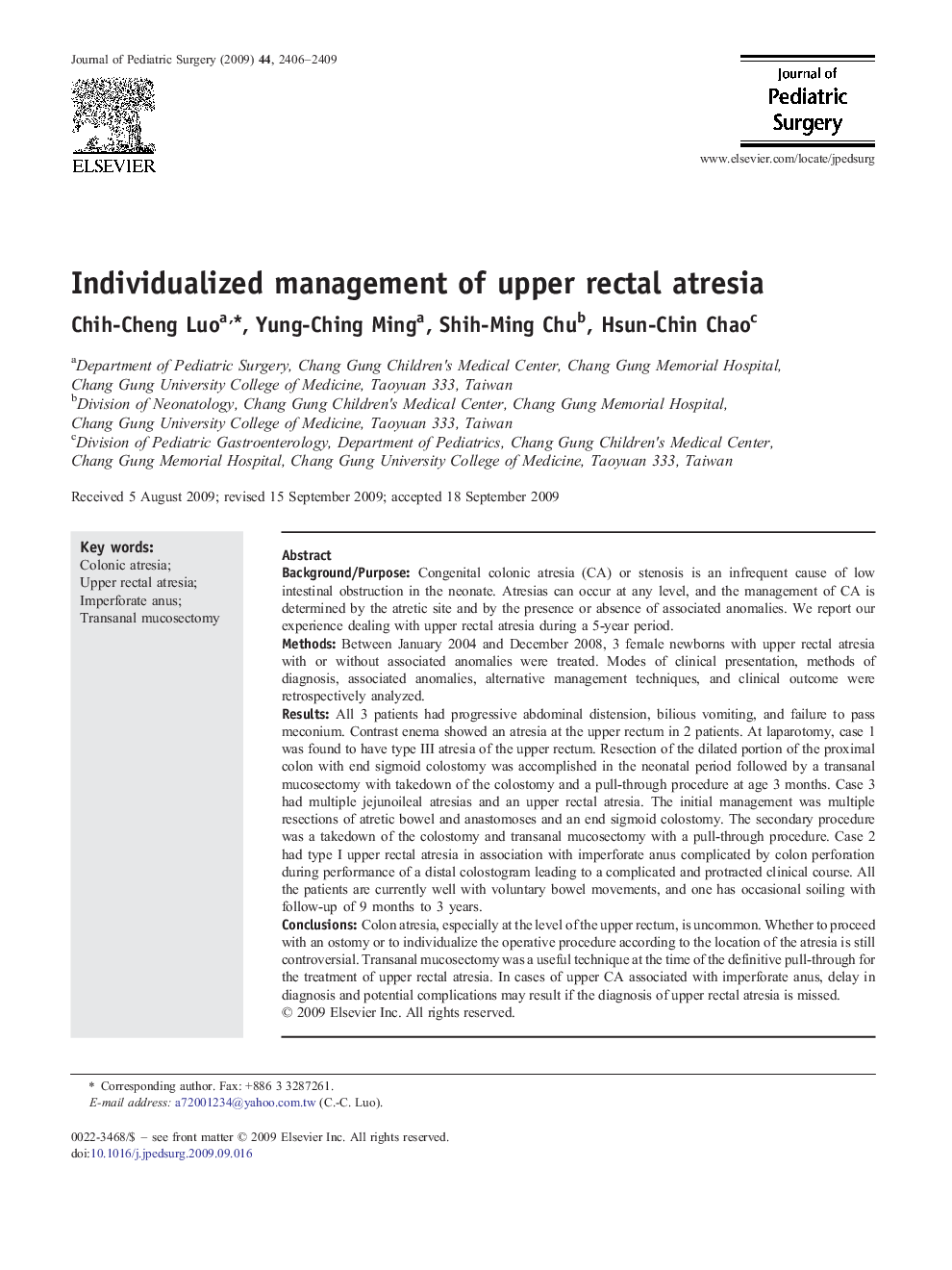| Article ID | Journal | Published Year | Pages | File Type |
|---|---|---|---|---|
| 4157844 | Journal of Pediatric Surgery | 2009 | 4 Pages |
Background/PurposeCongenital colonic atresia (CA) or stenosis is an infrequent cause of low intestinal obstruction in the neonate. Atresias can occur at any level, and the management of CA is determined by the atretic site and by the presence or absence of associated anomalies. We report our experience dealing with upper rectal atresia during a 5-year period.MethodsBetween January 2004 and December 2008, 3 female newborns with upper rectal atresia with or without associated anomalies were treated. Modes of clinical presentation, methods of diagnosis, associated anomalies, alternative management techniques, and clinical outcome were retrospectively analyzed.ResultsAll 3 patients had progressive abdominal distension, bilious vomiting, and failure to pass meconium. Contrast enema showed an atresia at the upper rectum in 2 patients. At laparotomy, case 1 was found to have type III atresia of the upper rectum. Resection of the dilated portion of the proximal colon with end sigmoid colostomy was accomplished in the neonatal period followed by a transanal mucosectomy with takedown of the colostomy and a pull-through procedure at age 3 months. Case 3 had multiple jejunoileal atresias and an upper rectal atresia. The initial management was multiple resections of atretic bowel and anastomoses and an end sigmoid colostomy. The secondary procedure was a takedown of the colostomy and transanal mucosectomy with a pull-through procedure. Case 2 had type I upper rectal atresia in association with imperforate anus complicated by colon perforation during performance of a distal colostogram leading to a complicated and protracted clinical course. All the patients are currently well with voluntary bowel movements, and one has occasional soiling with follow-up of 9 months to 3 years.ConclusionsColon atresia, especially at the level of the upper rectum, is uncommon. Whether to proceed with an ostomy or to individualize the operative procedure according to the location of the atresia is still controversial. Transanal mucosectomy was a useful technique at the time of the definitive pull-through for the treatment of upper rectal atresia. In cases of upper CA associated with imperforate anus, delay in diagnosis and potential complications may result if the diagnosis of upper rectal atresia is missed.
